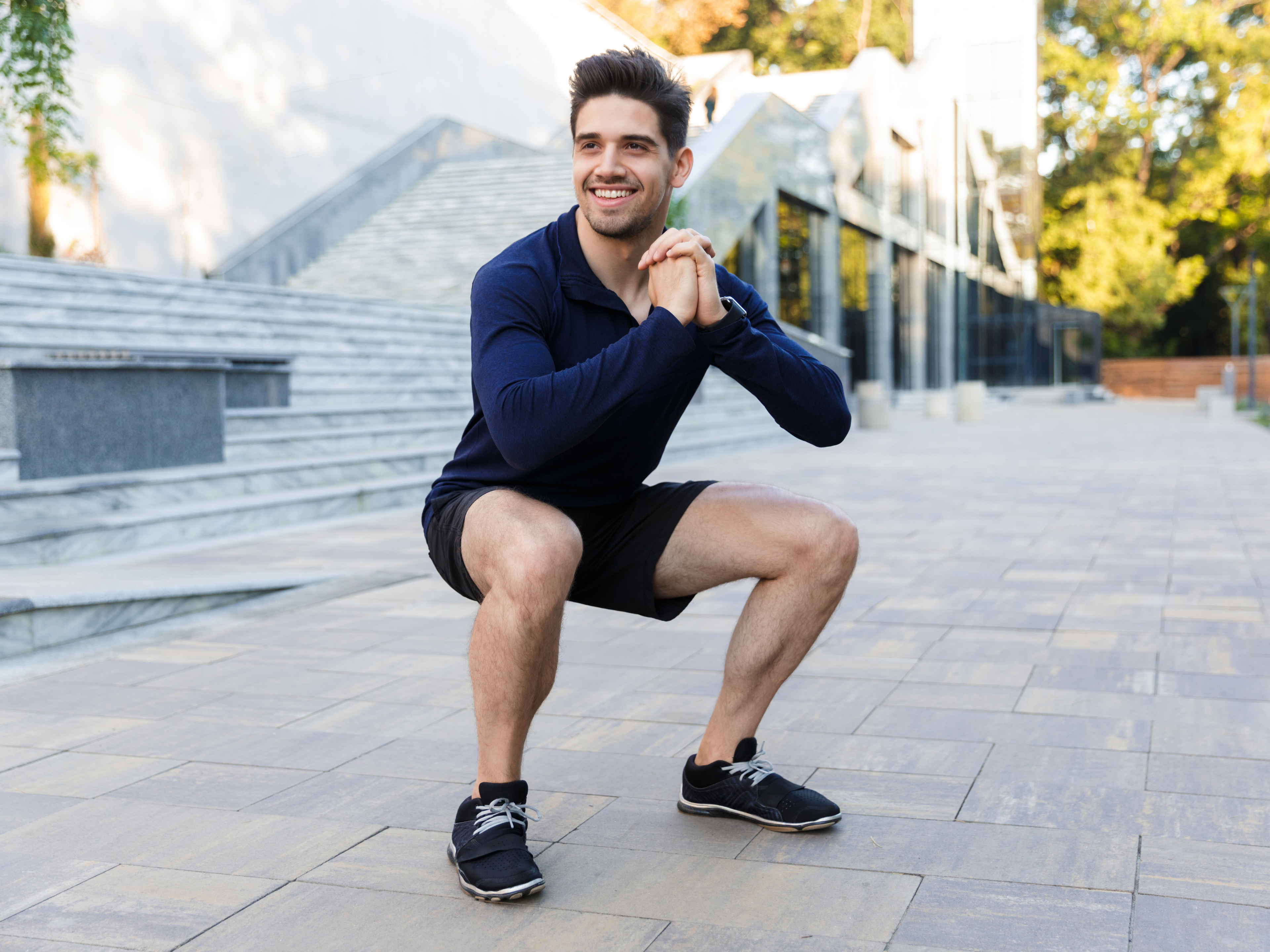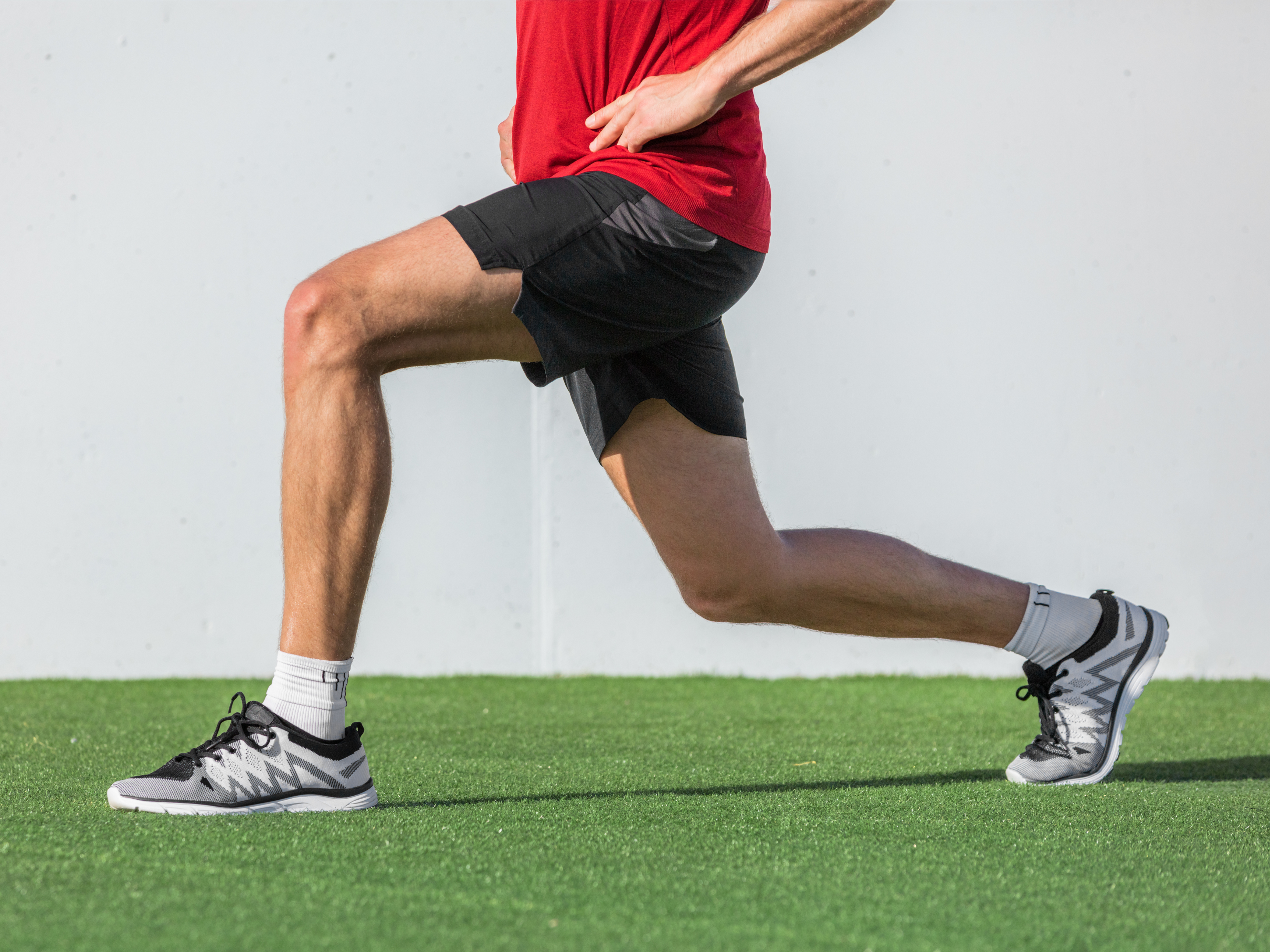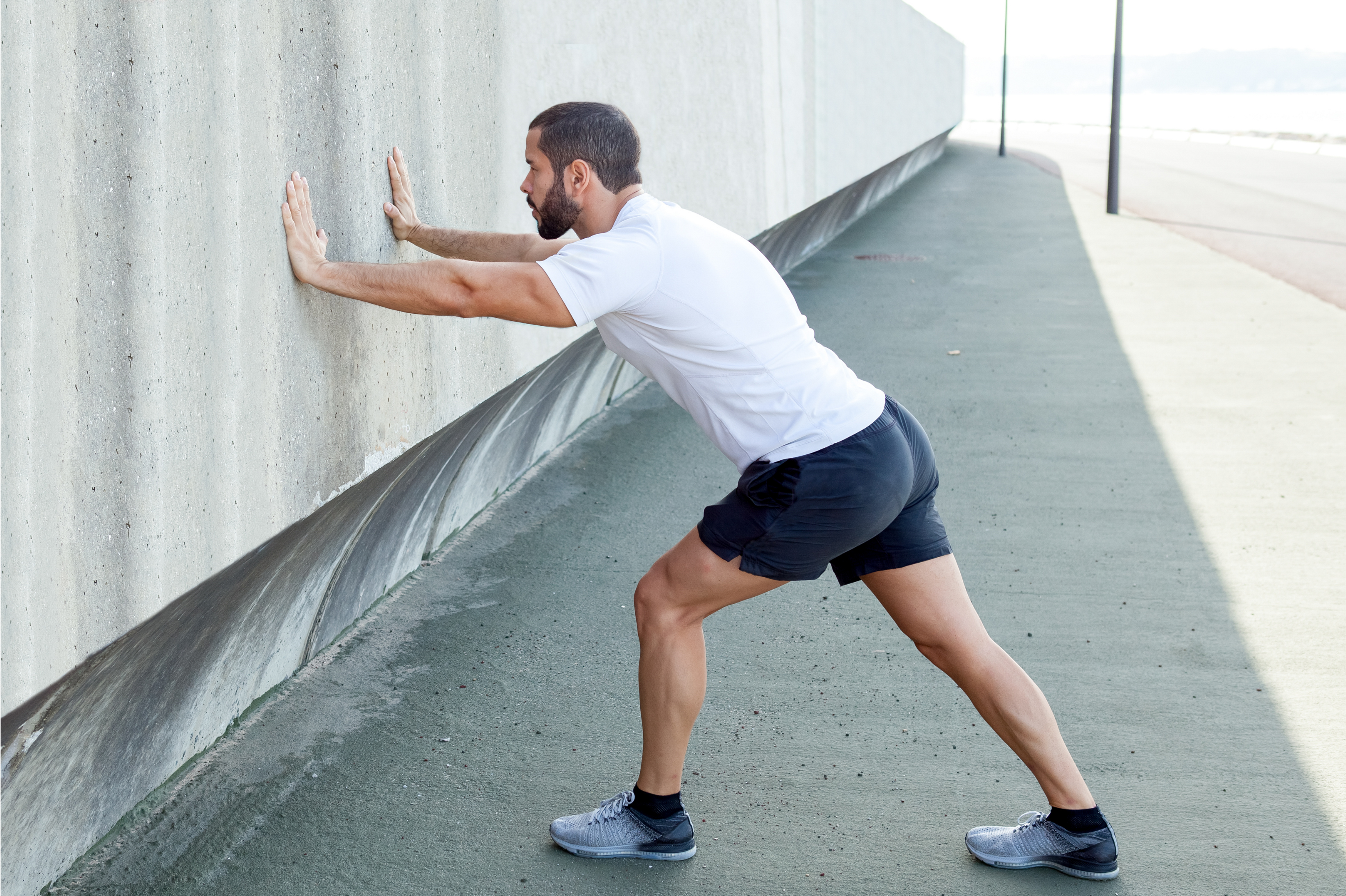Bodyweight squats: Benefits, common mistakes, and progressions
First, we’ll explore the benefits of bodyweight squats, then how to perform them correctly, what mistakes to avoid, and how to modify them to suit your skill level.
Benefits of bodyweight squats
The bodyweight squat exercise is one of the best full-body exercises for sports conditions — you'll find it in all of our running injury rehab and prevention plans.
What muscles do bodyweight squats work?
You can use squats to train most of the major muscle groups in your body at varying degrees, depending on how you perform them.
The primary muscles powering a bodyweight squat are your:
- Quadriceps (front of the thigh)
- Hamstrings (back of the thigh)
- Glutes (buttocks)
Other muscle groups that work during a squat are your:
- Inner thigh muscles (adductors)
- Calf muscles
- Back muscles
- Abdominal muscles
Besides targeting many different muscle groups, bodyweight squats have been shown to challenge movement control, strength, stability, and mobility in your kinetic chain (the interconnected parts of your body).
That’s likely why experts consider it an essential exercise for improving sports performance, reducing injury risk, and supporting lifelong physical activity.
How to do squats without weight effectively
How to position yourself for a good bodyweight squat
Foot and ankle
Stance width
It's best to stand with your feet and ankles at least hip-width apart, with your feet pointing slightly outward. A wider stance may be more comfortable, though. So, do a few squats with different foot positions to test what feels best.
Foot position
The foundation of a good bodyweight squat is a stable foot position where your weight is evenly distributed.
Focusing on a "3-point-loading" position can help. In other words, adjust your foot position, so the pressure under your big toe, little toe, and heel all feel equal.
Knee position
When you squat, your knees should be aligned with your hips and ankles, meaning they should point in the same direction. The wider your foot stance, the more crucial it is to pay attention to your knee position.
Back and Pelvis (Core)
For whole-body exercises like the bodyweight squat, your abdominal-, back- and hip muscles must work together to help control and coordinate the movement effectively. When these 3 muscle groups switch on and work together, it is called "core activation."
During a squat, core activation keeps your lower back and pelvis neutral — it prevents your spine from becoming excessively rounded or arched, maintaining a straight line with your pelvis.
How to move properly through your squat
Going down
To squat down, start by pushing your hips backward and bottom out behind you (as if sitting on a chair) while bending your knees.
Coming back up
To come up again, push your hips forward while raising your upper body and straightening your knees. Take your hips along the same path as when you came down, but in reverse.
How deep should you squat?
Aim to go as low as possible without losing form.
Common squatting mistakes
Here, we’ll go through some of the most common squatting mistakes and ways to avoid them.
Top 5 squatting mistakes
1 - Breath holding
So many people forget to breathe when they squat!
The problem with this is it can interrupt the transfer of forces and flow of movement across your body, making squats feel harder than they need to.
Why it happens
Breath-holding during exercise is usually a learned response from your own experiences or what others say and do. The good news is it can be "unlearned."
How to fix it
Avoid overly focusing on the “right” and “wrong way” to breathe — it can get in the way of your form. Instead, concentrate on allowing yourself to breathe in and out normally and not holding your breath.
Sometimes, breathing techniques can be beneficial (i.e., breath-holding with heavily loaded squats), but for simple weight-free squats, not holding your breath is enough.
2 - Knees falling in or out
When your knees collapse in or out during a squat, it can stress your knee joint structures and lead to injury, so it’s best to try and avoid it.
Why it happens
There are a few reasons why your knee may move out of alignment during a squat:
- Short, tight hip adductors (inner thigh muscles) — pulling your legs inwards
- Weak glutes — losing control of your leg movement
- Reduced ankle dorsiflexion (toes to shin) — blocking your squat and causing your hip and knees to compensate to help you complete the squat
- Lack of proprioception (joint position sense) — not realizing your body is out of alignment
- Lack of concentration — rushing through your exercises or not focusing on doing them correctly
How to fix it
Things to help with muscle and joint limitations
- Mobility and flexibility exercises for your inner thigh muscles, calves, hips, and ankles
- Strengthening exercises for your glutes
- Raising your heels temporarily (e.g., with raised-heel training shoes, a weight, rolled-up towel, or a book) while you work on increasing calf and ankle flexibility
If you have high foot arches, no amount of flexibility work will improve your ankle range of motion — squatting with raised heels is the best long-term solution for this.
Things to help with proprioception:
- Tying an exercise band around your legs just above your knees — reminds you to push out against the band’s resistance, activating your glutes and helping control your leg position better
- Doing your squats in front of a mirror — adds visual feedback and helps you check and adjust your body position as you go
3 - Heels lifting off the ground
People often struggle to keep their feet flat on the floor through an entire squat movement.
When your heels lift during a squat, your balance (or center of gravity) shifts. This small change in position can lead to your muscles (e.g., hamstrings and glutes) not activating as well as they should, making your squat less effective. So it's best to have your heels on the floor during a squat.
Why it happens
Your heels may lift during a squat if:
- You have restricted ankle dorsiflexion (toes to shins), as discussed earlier
- Your body weight rests too far forward on your feet as you squat
How to fix it
- Do calf and ankle mobility and flexibility exercises — increasing ankle dorsiflexion (calf stretch examples)
- Use something to raise your heels — either permanently or temporarily (for reasons mentioned earlier)
- Shift your weight back — lifting your toes for a few repetitions can help; it centers your weight back over your midfoot and brings your heels to the floor
- Change your foot position — sometimes, a wider foot placement makes it easier to keep your heels down
4 - Chest dropping forward
During your bodyweight squat, your upper body should stay parallel to your shins as you move.
If you notice your chest drops forward, you need to address it to ensure you don’t lose the effect of your squat.
Why it happens
Typically, your chest will drop during a squat as a compensatory movement when you lack ankle flexibility, movement control, or core muscle activation.
How to fix it
- Increase your ankle dorsiflexion flexibility (as mentioned above)
- Strengthen your lower body and core muscles
- Work on your squat technique, ensuring you initiate and follow through from your hips correctly (as described earlier)
- Be aware of your chest position and actively correct it if necessary
5 - A rounding back
When you start to go lower into your squats, a slight rounding of your lower back is unavoidable and totally OK. But, you want to avoid extensive, uncontrolled spinal flexion (bending) or rounding, as this can increase the forces going through your spine and lead to injury.
Why it happens
Excessive lower back rounding is often called "butt wink." It's usually a sign that you’re working at a too-challenging level because your spine can’t hold its form through the whole exercise.
How to fix it
- Dial your squat difficulty level back
- Work on muscle strength and movement control in your lower back, pelvis, and hips
How to regress your squats (make them easier)
If a bodyweight squat is too hard for you, try the following less challenging exercises:
How to progress your squats (make them harder)
Once you’ve mastered lower-level exercises without any loss of form, it’s time to progress them. You can make it harder by adjusting:
- Range of motion — The lower you go, the harder it is
- Time under tension — Holding positions rather than moving in and out of the squat makes it harder
- Arm position — Reaching your arms out increases the challenge
- Surface — Softer or uneven surfaces make you work harder
- Weight and where you hold it — e.g., goblet squat vs. back squat
The bodyweight squat is an incredibly effective full-body exercise. But, for the best results, it's crucial to maintain proper technique, avoid common mistakes, and know when and how to progress and regress them properly.
Check out the strength training workouts in the Exakt Health app if you want more guidance. All the exercises have clear video and text instructions, and the App uses your feedback after workouts to progress your exercises at the correct time.



